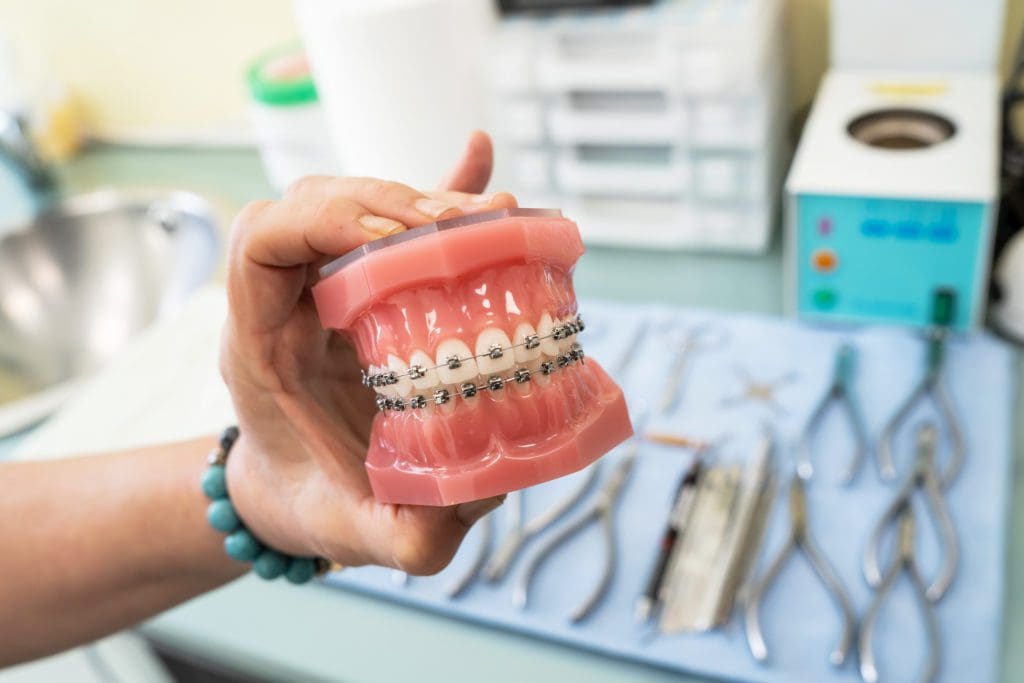How Cumming Orthodontics Can Change Your Smile with Invisalign and Braces
How Cumming Orthodontics Can Change Your Smile with Invisalign and Braces
Blog Article
Comprehensive Overview to Orthodontics Treatments for Fixing Dental Misalignments
Recognizing the intricacies of each treatment, including their systems, benefits, and potential drawbacks, is critical in making educated decisions regarding one's orthodontic treatment. As we navigate via the detailed guide to orthodontic treatments for remedying dental imbalances, the complex details of each approach will unfold, losing light on the path towards a practical and harmonious oral alignment.
Orthodontic Procedures Overview

Along with typical braces and clear aligners, orthodontists may likewise advise other interventions like headgear, palatal expanders, or retainers to resolve specific positioning concerns (cumming braces). These procedures are tailored to every individual's unique needs and may include a mix of therapies to achieve the desired results. Routine modifications and surveillance are important components of orthodontic therapy to make certain progress gets on track and to make any kind of essential alterations along the road. By undergoing orthodontic procedures, clients can not only accomplish a straighter smile however additionally boost their total dental wellness and feature.
Conventional Braces: How They Work
When thinking about orthodontic treatments for oral misalignments, traditional dental braces stick out as a tried and true method for dealing with teeth positioning. Typical dental braces consist of brackets, cords, and bands that interact to apply continuous pressure on the teeth, progressively relocating them into the wanted alignment. The brackets are connected to the teeth using a special adhesive, and the cords are threaded through the braces. By readjusting the tension of the cables, orthodontists can regulate the direction and pressure put on each tooth, guiding them into correct placement in time.
As stress is used to the teeth via the dental braces, the bone bordering the teeth is reshaped to support the brand-new tooth settings. Individuals will certainly need routine modifications at the orthodontist's office to guarantee the braces proceed to use the right pressure for effective teeth movement.
Unnoticeable Aligners: Pros and Cons
Invisible aligners supply a practical and discreet option to conventional braces for dealing with oral misalignments. These clear, personalized trays are practically undetectable when worn, making them an enticing choice for individuals looking for a much more visually pleasing orthodontic treatment. Among the main benefits of undetectable aligners is their removability, enabling for easier upkeep of oral health compared to typical braces. Patients can eliminate the aligners before consuming or brushing their teeth, minimizing the risk of food obtaining stuck in the home appliance and simplifying the cleansing process.

Surgical Orthodontic Options
Surgical interventions in orthodontics existing practical options for resolving complex oral misalignments that may not be properly solved via conventional orthodontic treatments. While unseen aligners and standard braces can correct several orthodontic problems, specific instances call for surgical treatment to accomplish optimal results. Surgical orthodontic alternatives are visit this website normally suggested for severe malocclusions, significant jaw inconsistencies, and situations where the underlying bone structure requires modification to attain appropriate alignment.
One common medical orthodontic procedure is orthognathic surgical procedure, which includes repositioning the jaws to deal with useful problems such as difficulty speaking or chewing. This surgical treatment is typically performed in collaboration with an orthodontist that aids line up the teeth before and after the procedure. Surgical orthodontics might additionally include treatments to reveal influenced teeth, get rid of excess gum tissue, or improve the jawbone to produce an extra unified facial account.
Before considering medical orthodontic alternatives, individuals undertake an extensive examination to figure out the necessity and possible advantages of such interventions. cumming braces. While surgical procedure might seem overwhelming, it can substantially improve both the feature and visual appeals of the smile in cases where traditional orthodontic therapies fail
Retainers and Post-Treatment Care

Post-treatment care entails following the orthodontist's instructions vigilantly. This may include appropriate oral hygiene practices, going to follow-up visits, and using the retainers as recommended. Failure to adhere to post-treatment care instructions can result in regression, where the teeth progressively return in the direction of their initial settings. Constant retainer wear, great oral hygiene, and normal oral examinations are crucial for keeping the outcomes accomplished with orthodontic surgical treatment and guaranteeing the long-term stability of the corrected dental alignment.
Final Thought
In verdict, orthodontic procedures supply different alternatives for fixing oral misalignments. Surgical orthodontic choices are available for much more extreme misalignments. Generally, orthodontic procedures can successfully improve oral health and visual look.
As we browse via the extensive overview to orthodontic procedures for dealing with dental misalignments, the complex details of each technique will certainly unravel, dropping light on the course towards a useful and unified dental alignment. - cumming orthodontist
One of the most usual orthodontic therapies is the usage of dental braces, which are composed of steel brackets and wires that apply gentle pressure to gradually shift teeth into the investigate this site desired position.When thinking low cost dental insurance about orthodontic treatments for dental misalignments, standard braces stand out as a tried and true technique for remedying teeth placing. Furthermore, invisible aligners might not be suitable for complex orthodontic issues that require more significant teeth movement, as they are usually recommended for mild to moderate situations. Retainers are tailor-made orthodontic gadgets developed to hold teeth in their fixed settings after the completion of orthodontic treatment.
Report this page